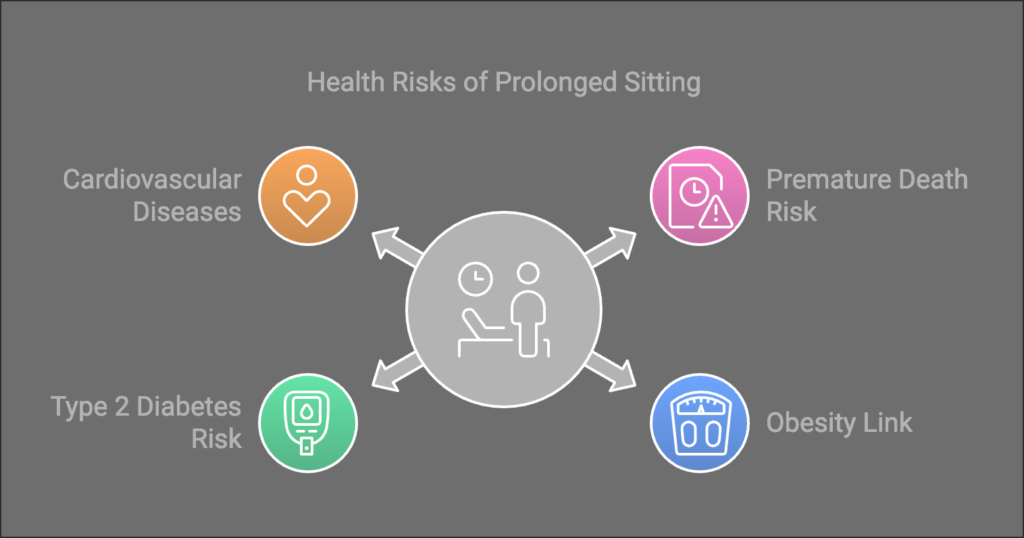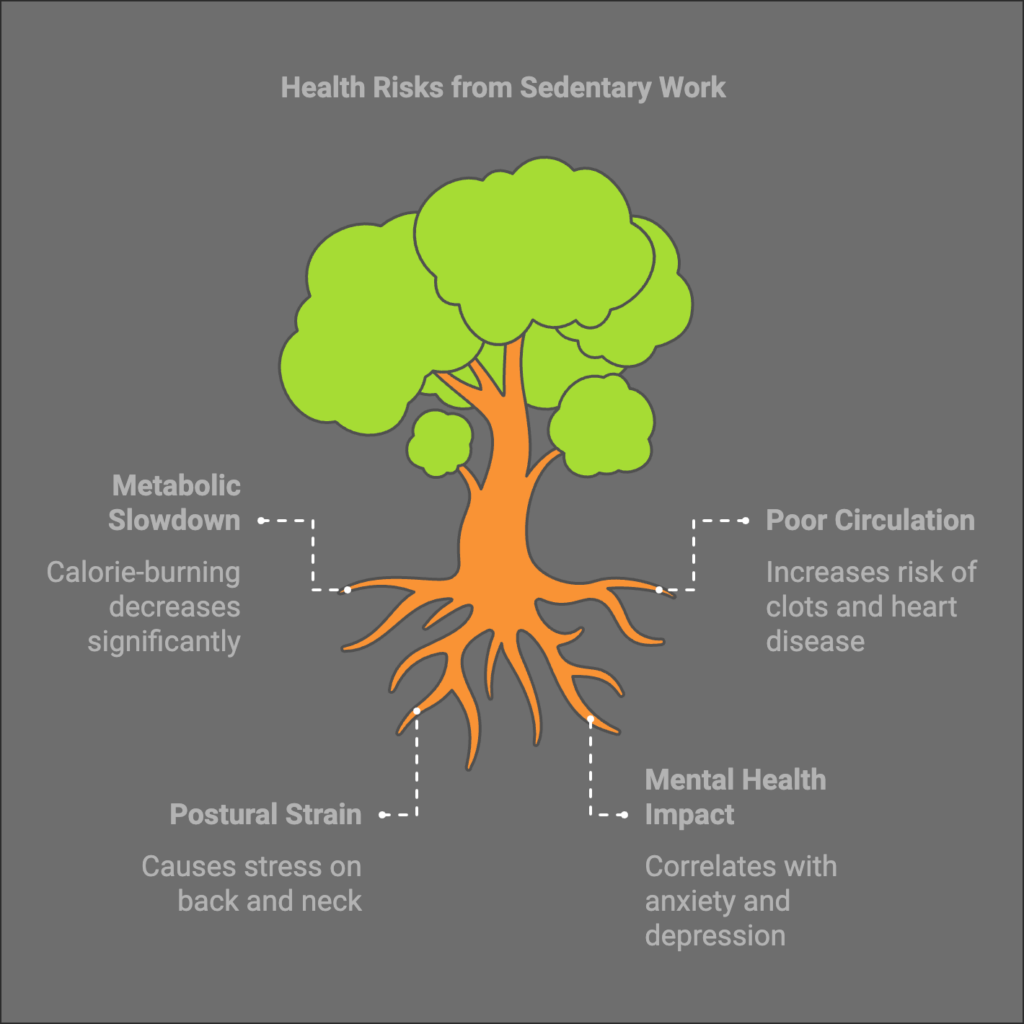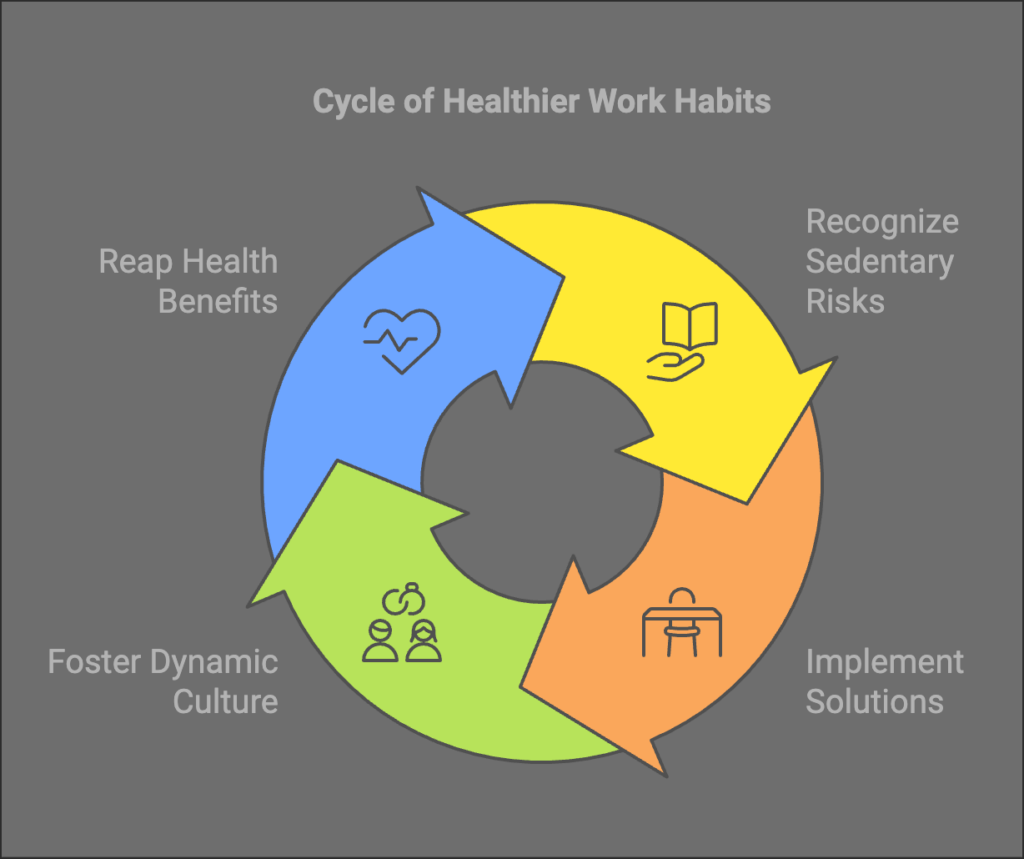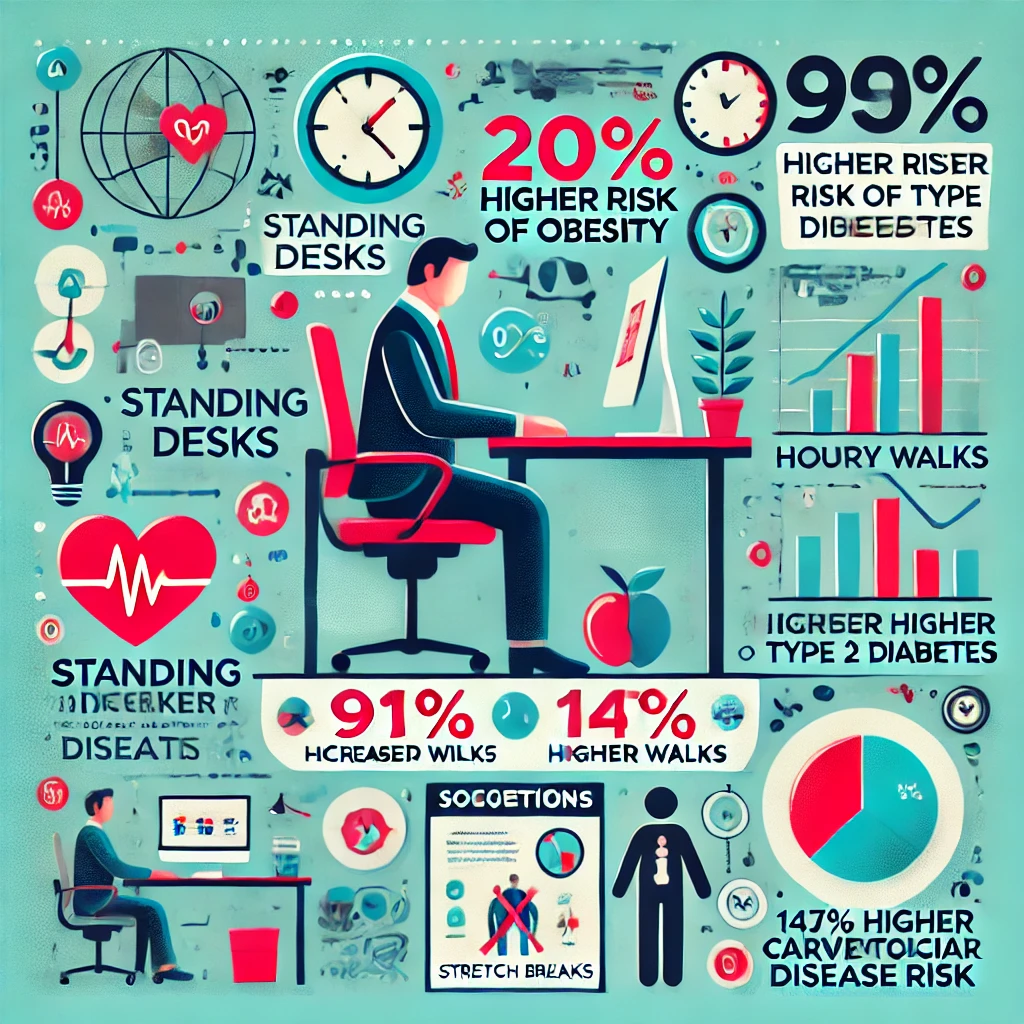The Impact of Sedentary Work on Health: Risks and Solutions
Introduction
Have you ever felt sluggish or uncomfortable after a long day sitting at your desk? You’re not alone. Modern work environments, characterized by long hours of sitting, are silently contributing to a global health crisis. Research reveals that sedentary work habits can lead to serious health problems, including obesity, type 2 diabetes, and cardiovascular diseases. But why does this happen, and more importantly, what can we do about it?

The Problem: Sedentary Work and Health Risks
Sitting for extended periods is a fundamental aspect of many office jobs. While it might seem harmless, studies have shown that prolonged sitting increases health risks substantially. According to Ekelund et al. (2016), individuals who sit for more than eight hours a day have a 15-20% higher risk of premature death. The same study highlights links between sedentary behavior and conditions like obesity, type 2 diabetes, and cardiovascular diseases.
Root Cause Analysis: Why Sitting Is Dangerous
The human body is designed for movement, not prolonged stillness. When we sit for extended periods:
- Metabolic Processes Slow Down: Calorie-burning drops significantly, leading to weight gain.
- Poor Circulation: Blood flow slows, increasing the risk of clots and heart disease.
- Postural Strain: Sitting improperly stresses the back, neck, and shoulders.
A sedentary lifestyle not only harms physical health but also affects mental well-being. Research by Owen et al. (2010) notes that inactivity correlates with mood disorders like anxiety and depression.

Solutions: Moving Toward a Healthier Workplace
The good news is that even small changes can significantly reduce the risks associated with prolonged sitting. Here are some actionable strategies:
1. Incorporate Active Breaks
Stand up and move every 30 minutes. Even a two-minute walk can enhance circulation and reduce muscle fatigue.
2. Use Standing Desks
Standing desks encourage better posture and reduce sedentary time. A study by Chau et al. (2016) found that employees using standing desks reduced their sitting time by up to 25%.
3. Promote Workplace Wellness Programs
Organize fitness challenges or provide access to yoga classes. These initiatives foster a culture of health and movement.
4. Redesign the Work Environment
Encourage walking meetings or create designated areas for stretching and light exercise.
5. Leverage Technology
Apps and devices like fitness trackers can remind employees to move and track their activity levels.
The Benefits of Taking Action
Organizations that prioritize employee health see benefits beyond reduced health risks. Active employees are more engaged, productive, and satisfied. Furthermore, businesses save money on healthcare costs and reduce absenteeism.
Conclusion
Sedentary work habits may be an inevitable part of modern jobs, but they don’t have to dictate your health. By understanding the risks and implementing simple solutions, both individuals and organizations can foster a healthier, more dynamic work culture. So, next time you’re at your desk, stand up and take a step—your body will thank you.

References
- Chau, J. Y., Grunseit, A., Chey, T., Stamatakis, E., Brown, W. J., Matthews, C. E., & Bauman, A. E. (2016). Daily sitting time and all-cause mortality: A meta-analysis. PLOS ONE, 8(11), e80000.
- Ekelund, U., Steene-Johannessen, J., Brown, W. J., Fagerland, M. W., Owen, N., Powell, K. E., … & Lancet Sedentary Behaviour Working Group. (2016). Does physical activity attenuate, or even eliminate, the detrimental association of sitting time with mortality? A harmonised meta-analysis of data from more than 1 million men and women. The Lancet, 388(10051), 1302-1310.
- Owen, N., Healy, G. N., Matthews, C. E., & Dunstan, D. W. (2010). Too much sitting: The population-health science of sedentary behavior. Exercise and Sport Sciences Reviews, 38(3), 105–113.
